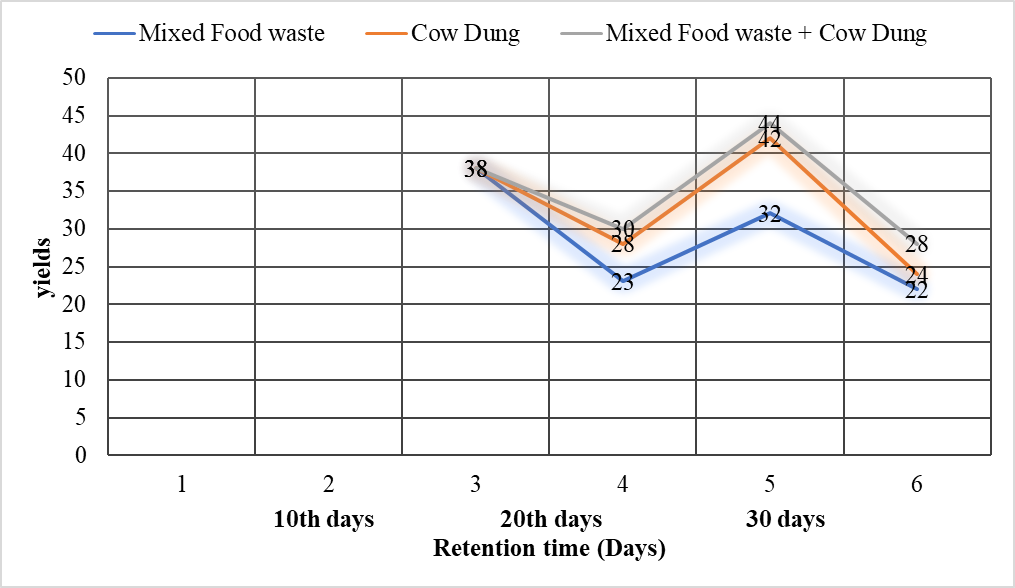
The primary aim of this research is to identify the best anaerobic digestion process yield for generating biogas from mixed food waste in the combination of cow manure. For the biogas generation experiment, certain biodegradable domestic organic wastes gathered from restaurants, waste storage facilities, the fruit-and-vegetable market and manure from cows. Organic waste collection; 38g of mixed food waste, cow dung waste and its mixture collected from Yaaballo town. To match the digester's input size and to make digestion easier, all wastes were broken down into little (5 mm) pieces by using a mortar and pestle. Organic materials were kept in plastic bags till anaerobic digestion got started. Because high temperatures stimulated the growth of methanogenic bacteria in the digester, the findings from the research indicated that Mixed Food Waste and Cow Dung Waste produced the most biogas (44ml) at 45⁰C in a short retention period. The temperature, PH, and retention time all significantly (P0.05) affect the production of biogas, according to the ANOVA results. It is possible to combine organic materials with equal amounts of high and low C:N ratios to get the ideal C:N ratios for digester use. The pH stability and increased methanogenic activities achieved by changing the C:N ratio of organic waste to provide the greatest biogas generation in Mixed Food Waste and Cow Dung Waste. For the best yield, the combination of diverse organic waste and the effects of various parameters on biogas production should be thoroughly studied.
Total file downloads: 33